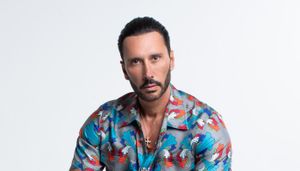Kevin Robert Frost, CEO ofamfAR, the Foundation for AIDS Research, has always believed it would one day be possible to cure HIV infection—he just didn’t know when that day would come.
He still doesn’t know for sure, but amfAR, encouraged by recent advances, is planning to invest $100 million over the next six years to find a broadly applicable cure by 2020.
“This is the moon shot of our generation,” says Frost, comparing the goal of a cure by the end of this decade to President Kennedy’s promise to put a man on the moon before the close of the 1960s, a promise that was indeed realized.
Discussing the Countdown to a Cure campaign, which amfAR launched early this year, Frost and other amfAR officials say there’s never been a more optimistic time in research on HIV and AIDS. They point to Timothy Ray Brown, known as the Berlin patient, who has stayed HIV-free for several years following a bone marrow transplant, and the Mississippi child who was reportedly cured of HIV last year after having begun treatment with antiretroviral drugs within two days of birth. Also, several patients in France have achieved sustained remission from the virus after undergoing treatment soon after diagnosis, even though they have subsequently gone off their meds.
There have been some disappointments too, such as the case of two men in Boston who appeared to be free of HIV after stem-cell transplants but then experienced a resurgence of the virus. But Frost is undaunted, saying scientists can learn from failures as well as successes. He quotes Thomas Edison on his efforts to invent the lightbulb before he finally succeeded: “I didn’t fail 999 times. I learned 999 times how not to do it.”
In the realm of HIV research, Frost says, “We’re learning a great deal about how things don’t work.” And different things may work for different people, he adds.
Countdown to a Cure involves a four-step approach to research. The first is to locate the reservoirs where HIV can hide in a person’s body, staying out of reach of whatever antiretroviral drugs the person is taking. The second is to understand how the reservoirs are formed and sustained. Then comes tallying the amount of virus in these reservoirs, followed by the final step, eliminating them. “If we can do these four things, we will be at the scientific foundation of a cure,” Frost says.
In February amfAR announced it had made 12 grants, totaling more than $2 million, for scientists in the U.S., Canada, Australia, and Spain to look into these matters. Frost notes that in Countdown to a Cure, amfAR will fund researchers already involved in HIV studies but also seek to attract those who have been focusing on other areas of health care. “Oftentimes, breakthroughs are made by those who aren’t even working in the field of study,” he explains.
He further stresses that this will be a collaborative effort, as scientists will have to share their research with each other, as a condition of the funding; that way, they will have access to one another’s discoveries early on, rather than waiting for studies to be published in a journal.
“I think that’s an important part of the initiative,” he says. The project also means amfAR has to raise additional funds, and Frost sees that as a group effort too. “We want to build a movement,” he says. “We want to get people involved in this,” as grassroots activists were in the 1980s and ’90s.
“It’s going to take people investing at all levels,” with donations both small and large, he says.
He exudes confidence that such a movement will produce the current generation’s moon landing. “I guess I’m an optimist by nature,” he says. “I knew that a cure was possible and I knew that research was the only way we would get there. I didn’t know what the timetable was.”

















































































